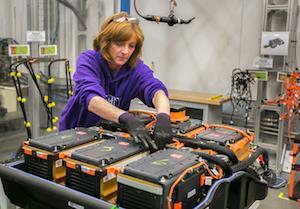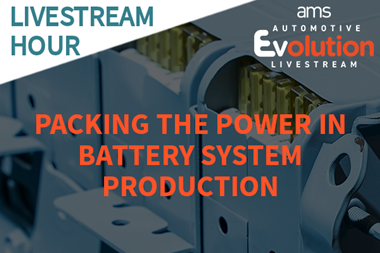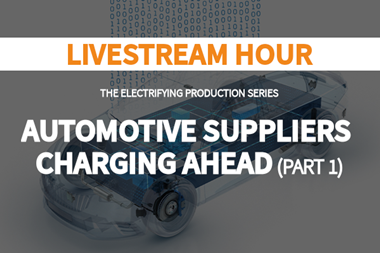Going green is about more than just driving an EV. Recycling is an important part of sustainability. However, we can see several issues with EV batteries that have traditionally posed problems for servicing, repairing and recycling. Henkel’s battery recycling expert, Philipp tho Pesch, discusses the challenges and solutions
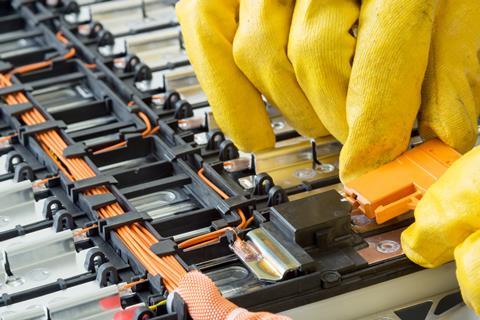
Why recycle EV batteries? Sourcing and processing materials used in batteries, such as lithium, nickel, and cobalt, is challenging and time consuming. This is resulting in shortages and price increases. According to Benchmark Market Intelligence, the price of lithium has surged more than 600% since the start of the year, from about US$10,000 per metric tonne in January to US$62,000 in June, with further increases expected to follow. In the average electric vehicle today, batteries represent between 30 % and 50% of the total cost share of the complete vehicle – a significant slice that, again, is only set to climb. The financial factor alone makes recycling these valuable materials extremely worthwhile, and with dwindling supplies, car companies have a vested interest to ensure these materials stay in the loop.

The process of obtaining these raw materials also has a big ecological and human impact. Numerous reports over the years have documented the destruction of local areas due to mining activities, with severe and lasting consequences on biodiversity. Several companies involved in these mines have pledged to tackle the problem, but high demand for the materials has kept them open. Repairing and recycling batteries could go some way to alleviating demand.
There are also regulations governing the usage of EV batteries that will soon come into force across Europe, North America and China. These include traceability measures, collection, recycling, and the ‘right to repair’. We have already witnessed this in the electronics industry, and it also may become relevant for automotive . It is crucial to enable not just the recycling of batteries, but also the service, repairability and second life. The most desirable and cost-effective option is to extend the first life of the battery for as long as possible before it is recycled and reused, as recycling always includes some form of downgrading.
What are the main challenges?
First, the EV battery needs to be dismantled from the vehicle, and then the battery itself needs to be dismantled. Batteries on the market today will typically have a structure where the cell is integrated into the module, and several modules are integrated into a battery pack. The valuable raw materials – the key part of the battery – are sitting inside the cells. The hydrometallurgical and pyrometallurgical processes used to recycle these metals are well established, but traditional EV battery design poses several challenges.
One of the first challenges is the opening and closing of the battery pack itself, as the housing above the module cells are typically sealed and glued. This permanent glue and sealant make it very difficult for repairs. If there is an issue inside the pack, it is imperative to be able to open and close it without causing damage to the structure. Another difficult challenge is separating the modules from the cooling plate, which must be securely attached when in use while also covering thermal properties. If repairability and extending the lifetime or reuse is the goal, then separating the two also needs to be done in a non-destructive way without damaging the modules.
“The holy grail is the development of a thermally conductive adhesive that can be de-bonded, enabling far higher recycling yields” – Philipp tho Pesch
Degradation of batteries is also a major issue. At the end of first life, EV batteries usually have a capacity of around 80%, although that figure could be lower due to high usage. This may not be suitable for use in another EV, but easily sufficient for use in a three-wheeler, a scooter, or in stationary storage applications and power generators. Batteries will need to be carefully dismantled and repurposed for use in these applications, all of which have very different requirements in terms of housing, safety and performance.
At present, the disassembly process is mostly done manually. If the steps are to be automated, the design of the batteries needs to be altered. Robots will need somewhere to grab the battery modules, while the assembly technologies and connections must be designed to be detachable, and the system architecture must be laid out in a well-arranged design.
How can Henkel help?
As a functional material provider, Henkel has a holistic portfolio of products used inside the battery pack. These applications currently range from compression pads, battery cell assembly adhesives, thermal gap fillers, structural adhesive, gasketing materials and fire protective coatings.
For repair and recycling, Henkel’s journey began with the battery pack housing. The company started to supply a gasketing material that is easily removable for battery service and repair, allowing for the opening and closing of battery packs. This greatly minimised the loss of first life product specification. Henkel then introduced thermal interface materials, like Gap Filler with low pull-off forces. This meant that modules that are connected to the cooling plate could be removed without causing damage while extending the life of the battery packs with high-performance heat dissipation. Henkel also provides cleaner materials with very low adhesion that are very easy to remove, enabling second use of battery modules.
The last part – the holy grail – is the development of a thermally conductive adhesive that can be de-bonded, enabling far higher recycling yields. Based on different triggers such as temperature, magnetic, mechanical, and electrical, the structural adhesive will be de-bondable, allowing the non-destructive dismantling of the whole battery pack. It will be extremely advantageous in terms of both repairability and recyclability. De-bonding the adhesives in an EV battery will allow for much higher recycling yields, and for second life, the modules can be separated. Henkel is working with automakers, automated disassembly specialists and recycling companies on this solution.
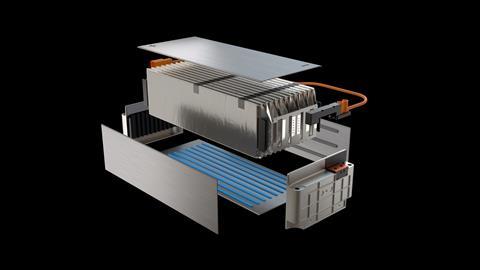
Is battery recycling evolving?
Battery technology is evolving at a rapid pace, and there are several key factors for car companies to consider. There is the aspect of design for cost, pushing down the price of battery and therefore the overall vehicle cost. There is design for performance, with car companies aiming to satisfy consumers and alleviate range anxiety by offering models with over 400 miles of range. And then there is design for sustainability, with repair and recycling becoming major factors as well as the overall environmental footprint of the battery.
There are currently three primary battery cell formats: prismatic cells, pouch cells, and cylindrical cells. As designs improve, there will likely be a more integrated battery sitting inside the chassis of the vehicle, with a more direct cell-to-pack structure that leaves out the module. This will allow carmakers to provide more range with a smaller pack, which is desirable for the customer but is not always beneficial for recycling. The best way to address this is to work with battery design teams from the start. Servicing, repair and disassembly must be considered from outset to maximise the lifetime of EV batteries and enable recycling. It is of high economic interest for the carmaker, as money would be saved repairing batteries instead of replacing them entirely, while recycling and reusing them would ensure materials value is retained.
Recycling EV batteries is being pushed forward by the regulations, but it does not currently make much economic sense. The first life of EV batteries lasts for somewhere between 8 and 15 years, and if we look back 15 years ago, EVs were in their infancy and there were very few of them on the roads. This means that there are currently very few batteries ready to be recycled, and for the companies involved in recycling, automated facilities that are used to handle large volumes aren’t needed. However, there has been a major increase in demand for EVs over the past 10 years, so there will soon be a rapidly growing market for recycling. Companies involved in recycling should be readying for a huge increase in demand over the next few years.
Learn more about Henkel’s E-Mobility solutions here































